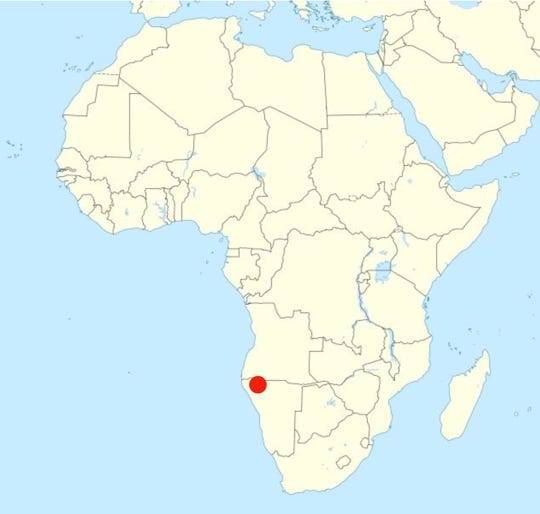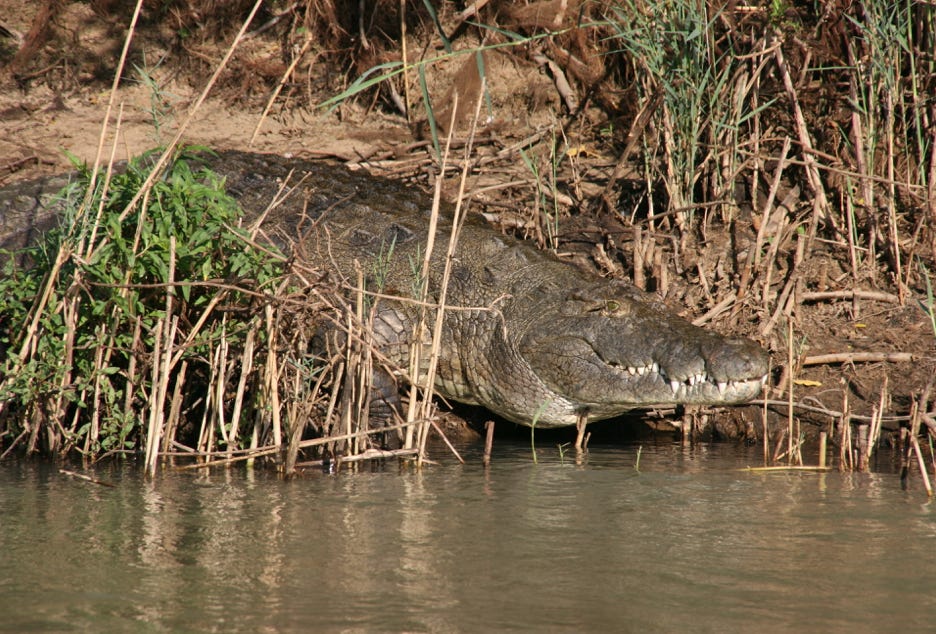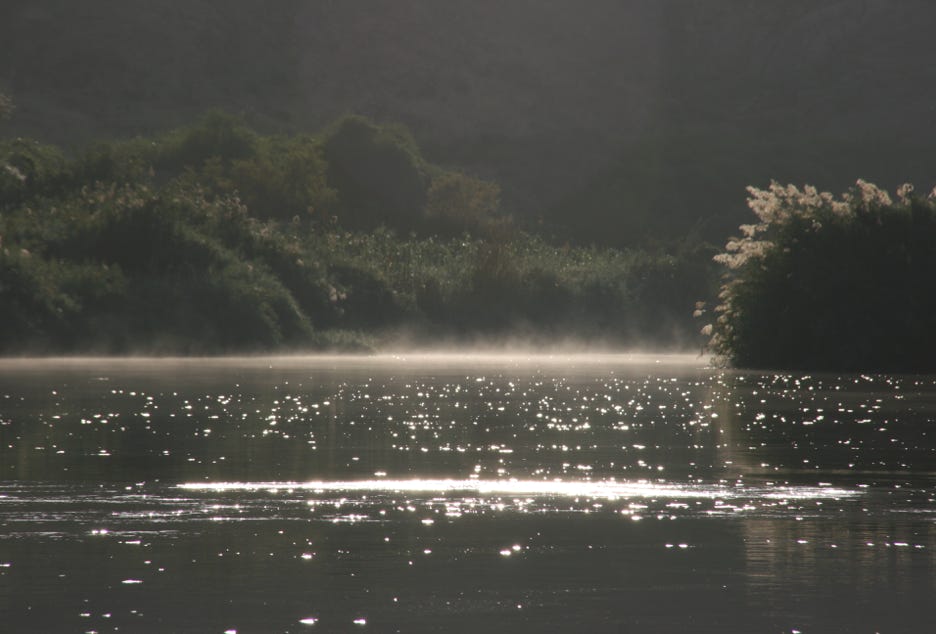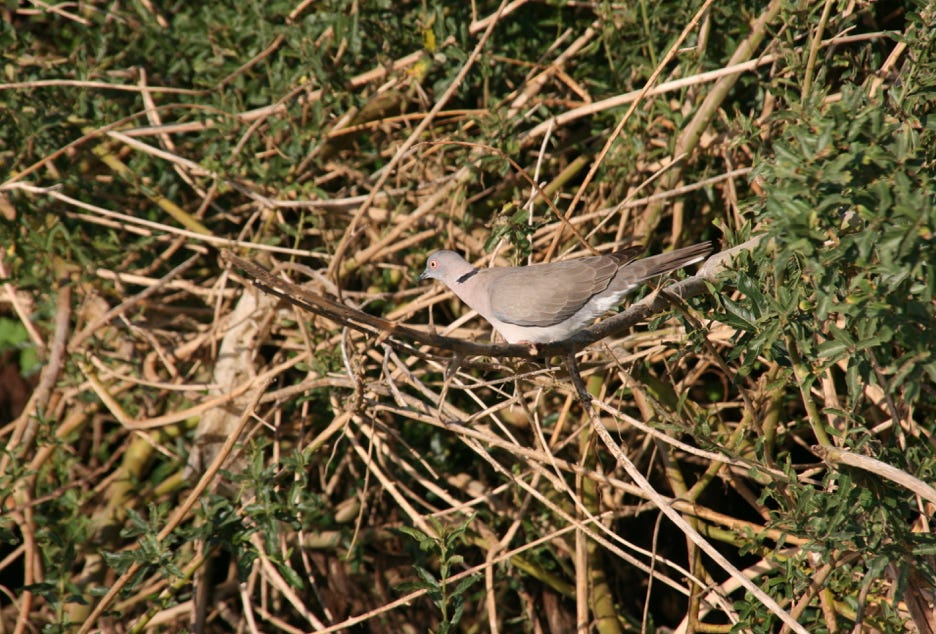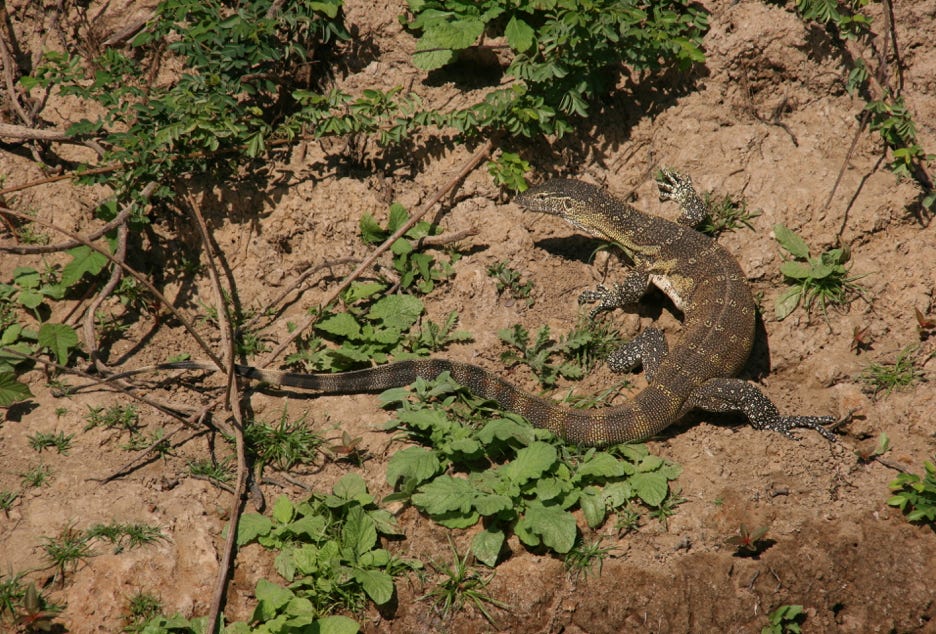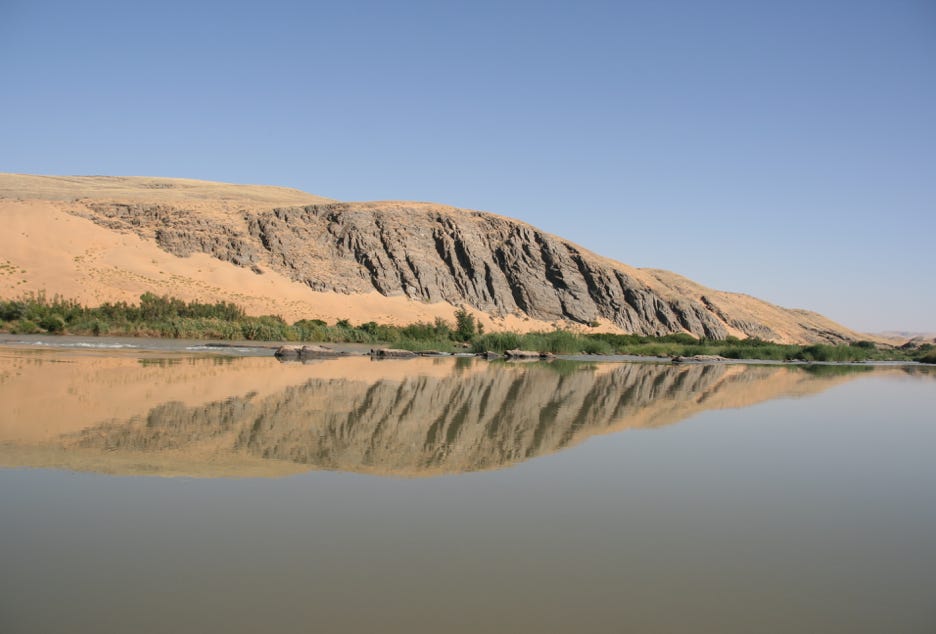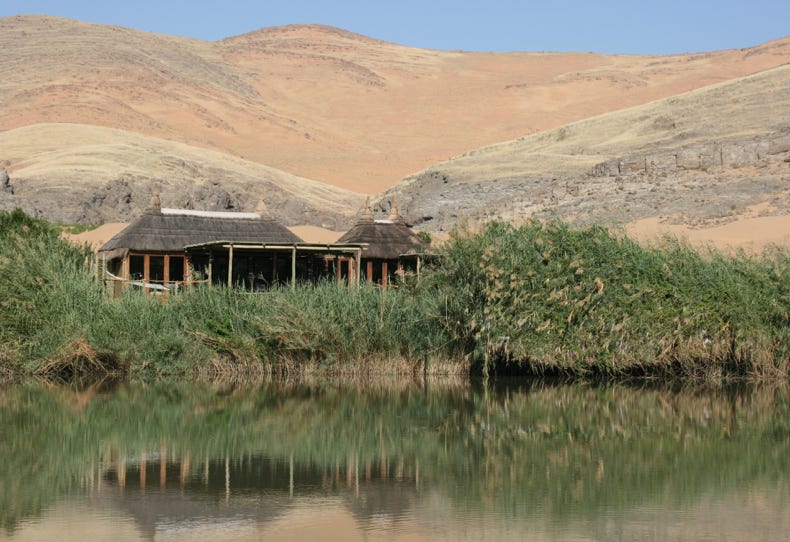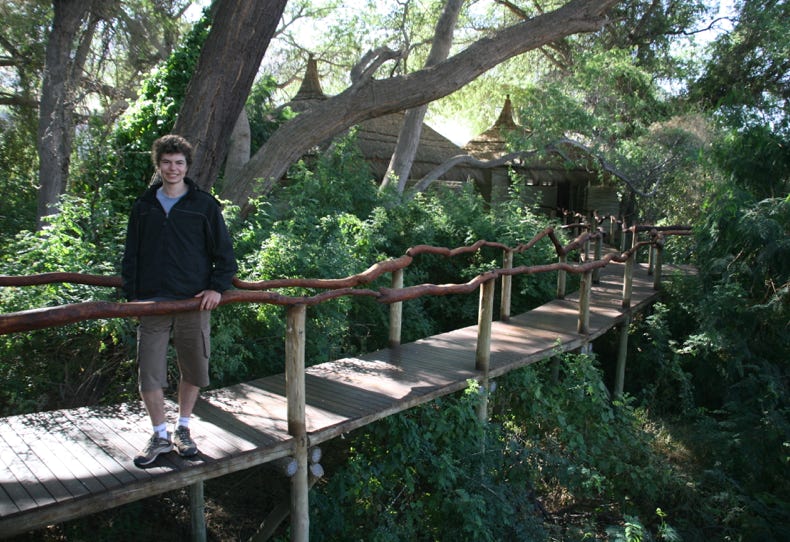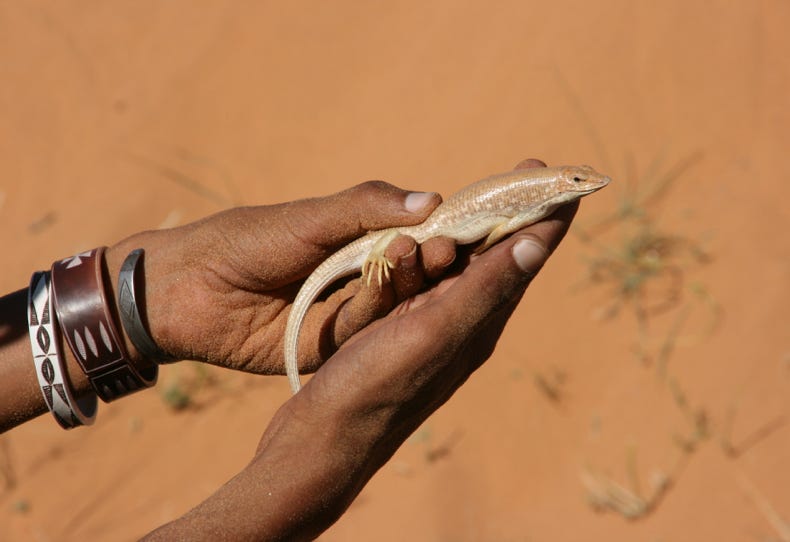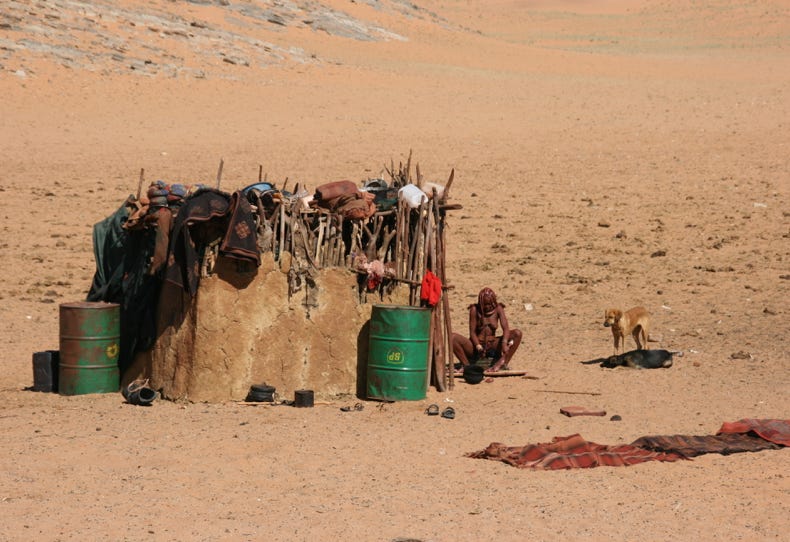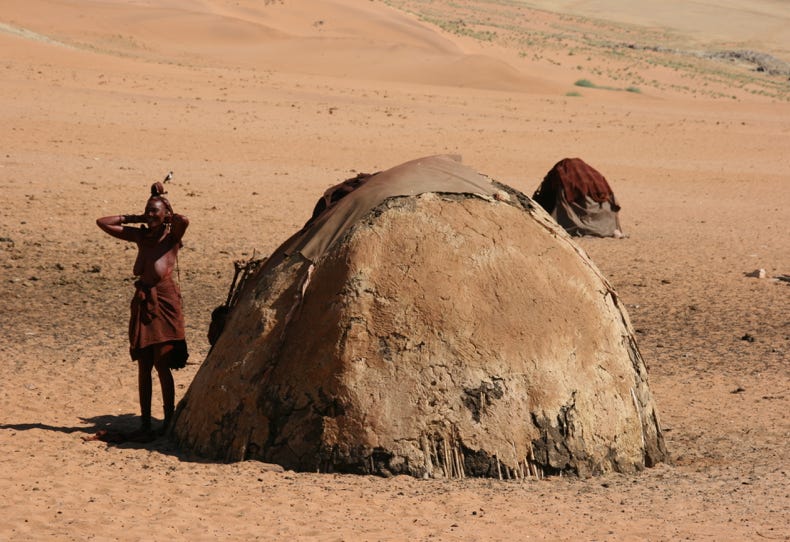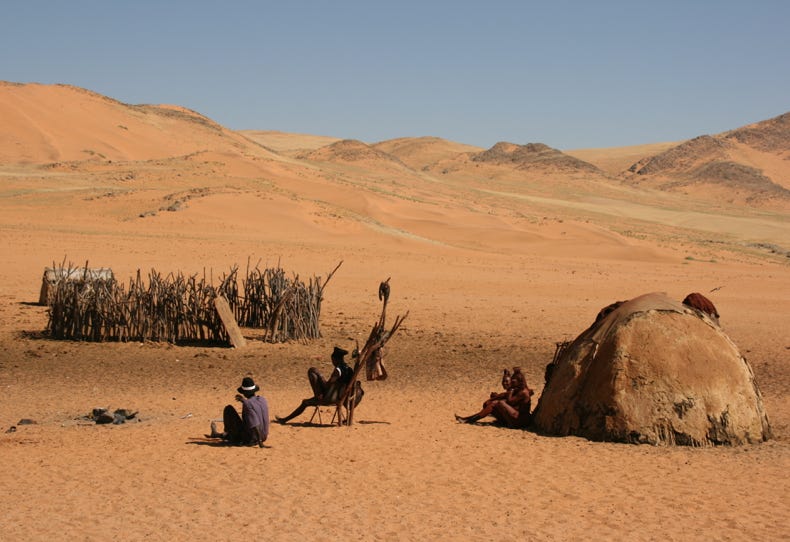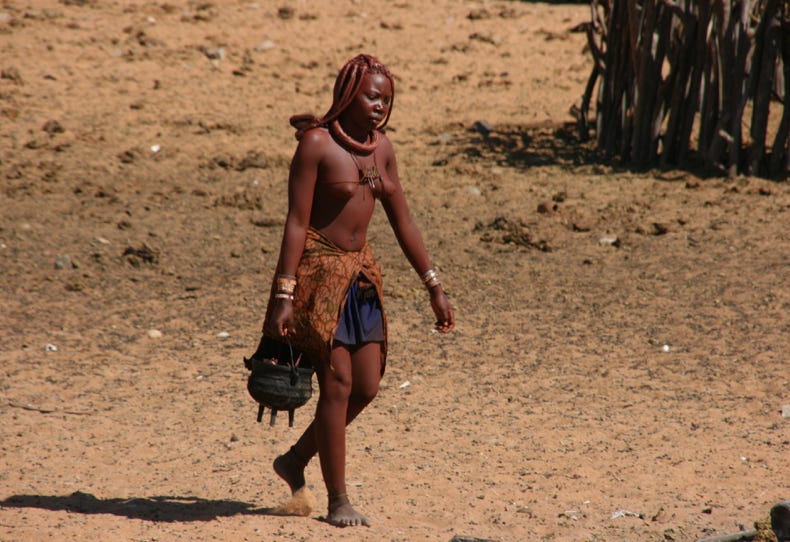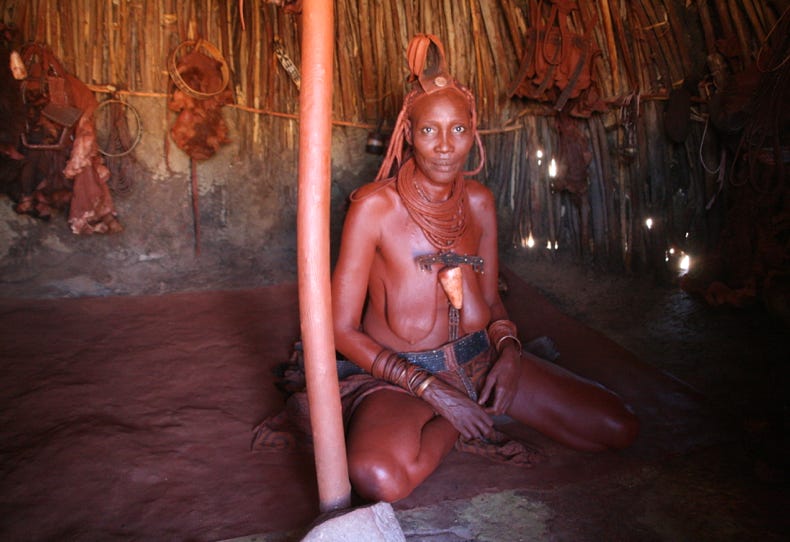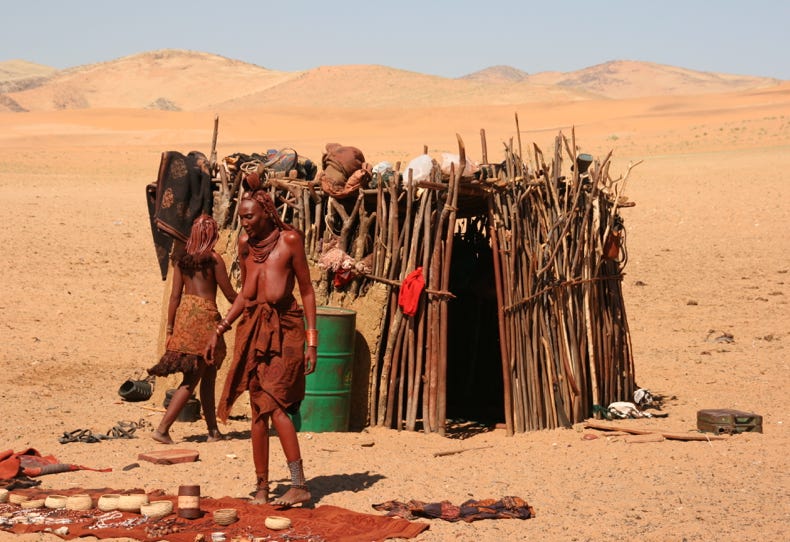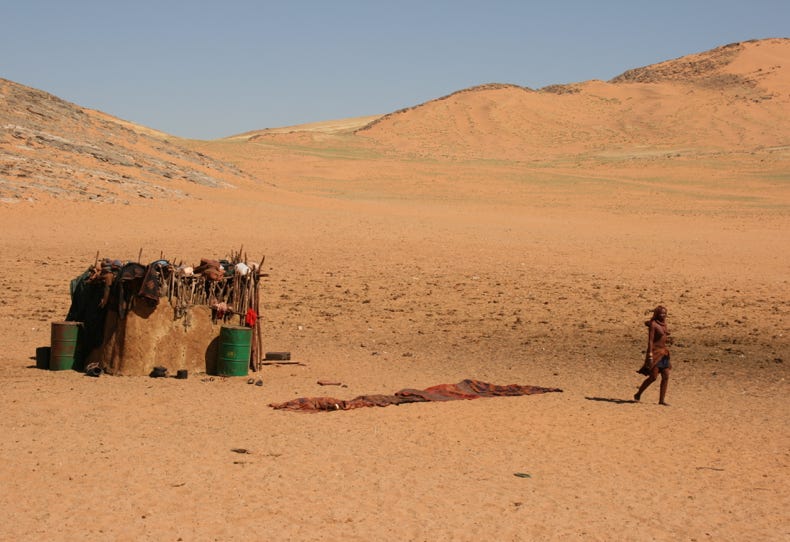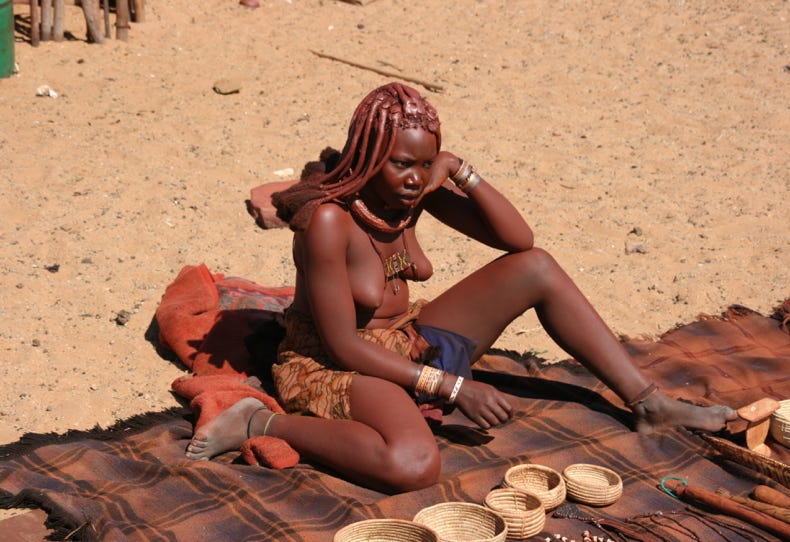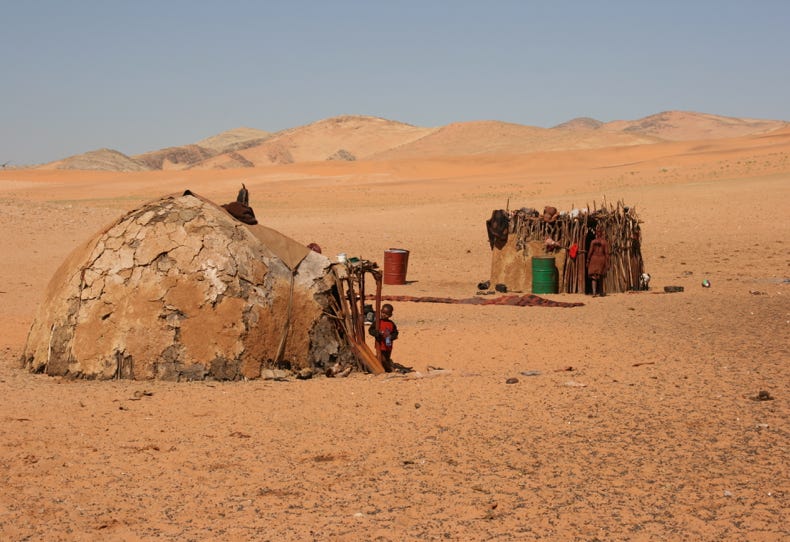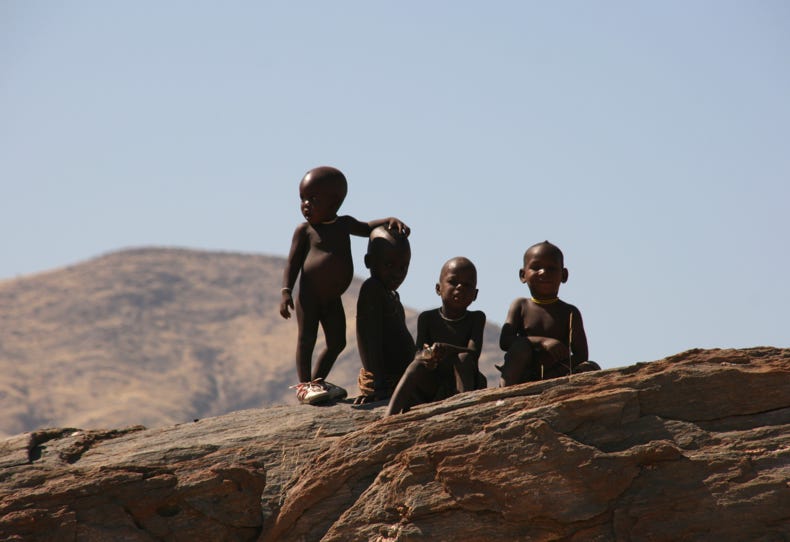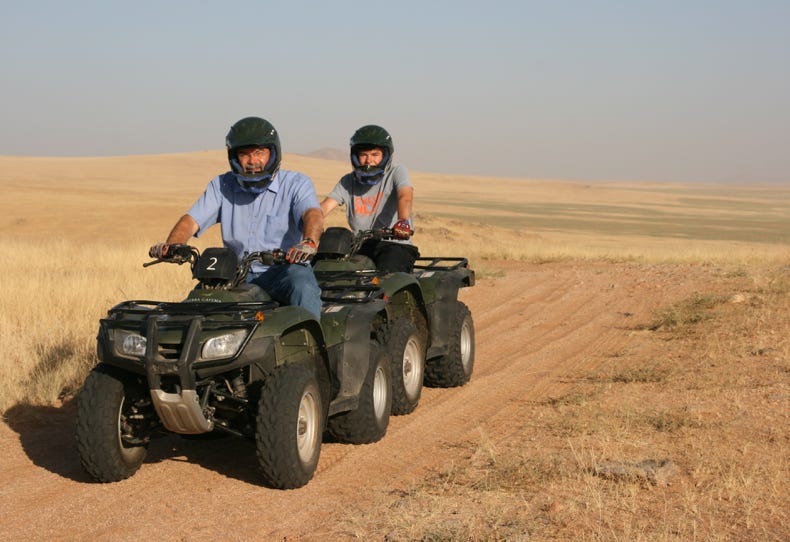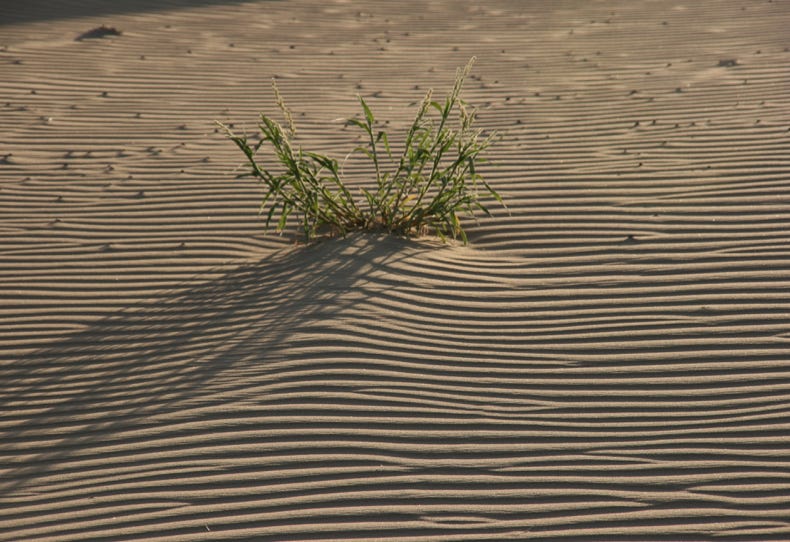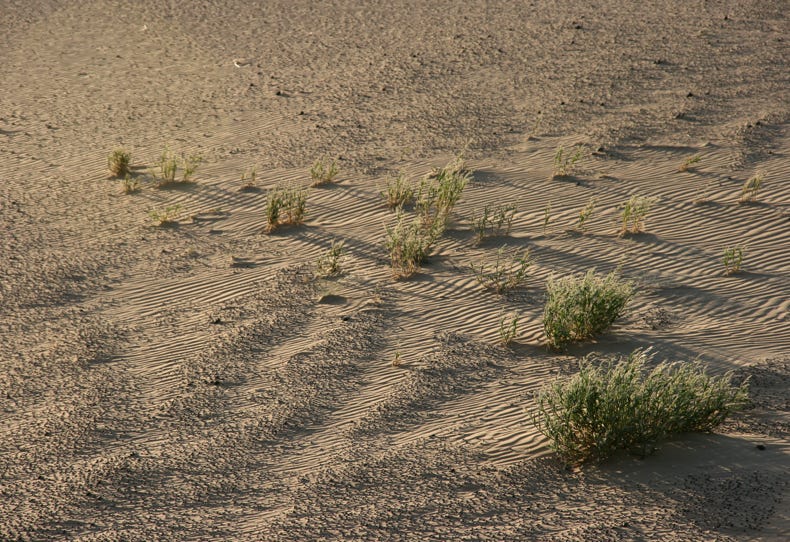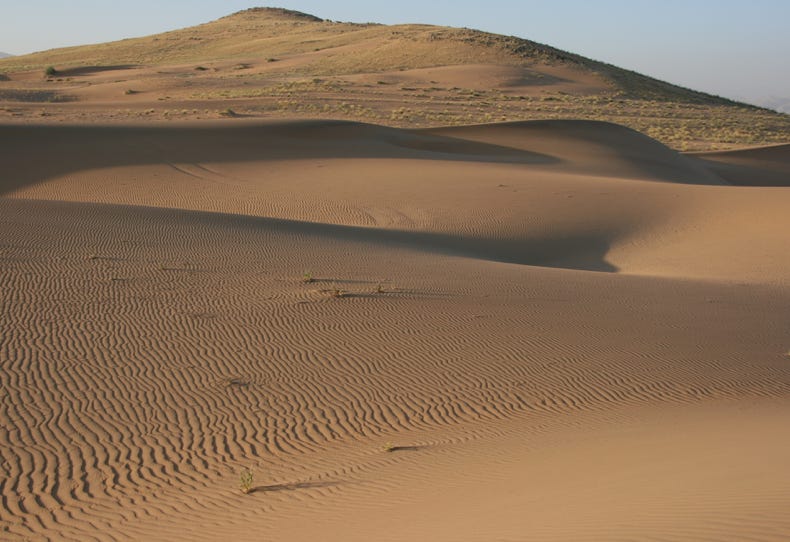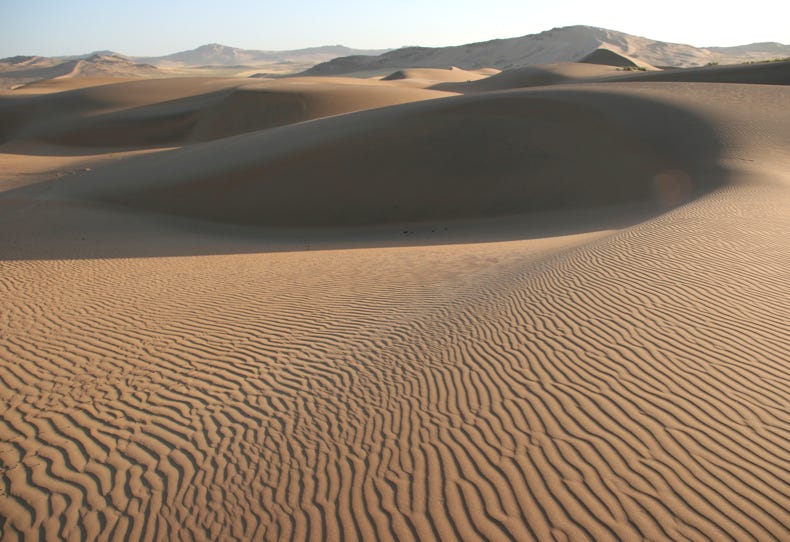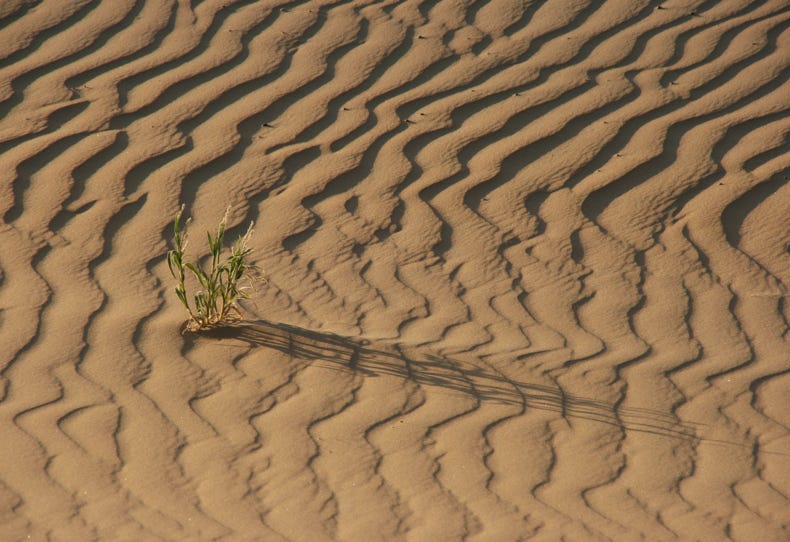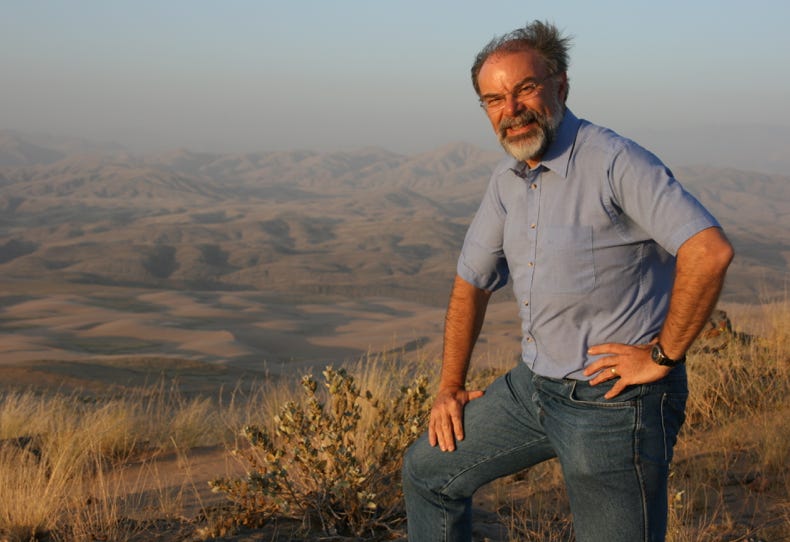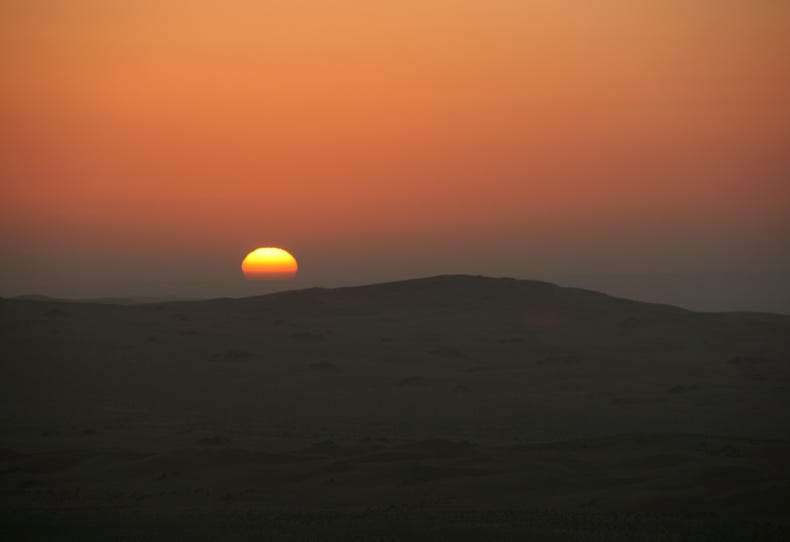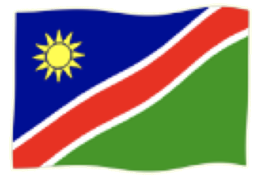

When the alarm sounded at 5:30 am this morning, it was unexpectedly cool. Even having warm water in the shower seemed to make little impact to warm us up. However, having a cup of tea brought to the room at 6:00 am did help; African hospitality here is brilliant.
The reason for the early start was to have an early morning boat trip on the Kunene River, while the river waters were fairly still and the wildlife could still be seen. It was an almost primordial experience to drift along the river as the sun was about to rise, watching the mist rise in apparent slow motion from the water’s surface, listening to the chorus of bird calls and watching seemingly prehistoric reptiles such as large lizards, monitors and crocodiles slink into the dark water. We even saw a few of the nomadic Himba people, some gathering water and one fishing.
The Kunene River forms the border between Angola and Namibia, and as we travelled upstream, we had Angola to our left and Namibia to our right. Few international borders could be as scenic or as tranquil as this one.
We returned to our accommodation at about 9:30 am, totally caught up in the magic of our experience on the river. After a short rest, we set out at about 10:00 am to visit a Himba encampment that was about 20 minutes drive from our camp. The Himba are a nomadic tribe of pastoralists who still largely retain their traditional lifestyle. We passed a couple of abandoned Himba encampments before arriving at our destination, an encampment inhabited by a family comprising a married couple, several children (of which only a teenage daughter and a young son were present at the time of our visit), and their aunt.
Francois gave us an excellent 20 minute introduction to the Himba people, which I was delighted to be able to record on my iPod. He explained Himba etiquette, the structure of the Himba encampments (each of which accommodates just one family plus their animals), and the significance of the red colouring that the women smear on their bodies and through their hair every day (which is mainly for protection against the sun). Interestingly, the women invariably still wear traditional dress, but the men these days tend to wear T-shirts and trousers “because of their (the men’s) importance”.
We returned to our camp where we had a light lunch of salad and samosas followed by fruit salad. This effectively kept us out of the heat of the day until 3:00 pm, at which time we had reserved some quad bikes to explore the dune ecosystems. Both Andrew and I were really looking forward to riding the quad bikes, partly for the ‘action’ component of riding over remote rough roads and getting into isolated sand dunes, and partly for the opportunity they provided to explore some unusual desert ecosystems at close hand.
We were not disappointed. It was surprisingly easy to learn the techniques of riding the quad bikes, and having done so, we spent over three hours on the bikes and saw some spectacular scenery. Our long circuit took us initially along quite rough roads to take us into the elevated dune areas that I was especially keen to visit. In the golden light of the afternoon sunlight, the sand dunes for which the Namib Desert is famous looked magnificent. Just before sunset, we climbed a rocky outcrop with gave us a bird’s eye view over the extensive dune fields. For both Andrew and me, the experience on the quad bikes was an unforgettable experience that opened up new understandings of the very special place that the unique environment of the Namib Desert is.
We returned to our campsite at about 6:30 pm, having driven for the previous 15 to 20 minutes with headlights on. We then enjoyed a great dinner; there was no choice on the menu but it didn’t matter as it was great anyway. Dinner gave us an opportunity to talk and reflect on the three quite different experiences of the day, each of which had been very special in its own way. We agreed that this had been an excellent and memorable day.
